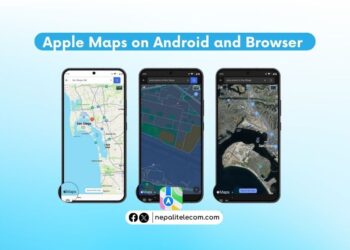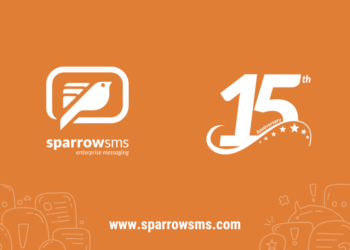Nepal Rastra Bank (NRB), the central bank has issued a new set of digital payment limits for mobile banking, internet banking, wallet transfer, etc. The daily and monthly transactions along with other policies come off of the Unified Directive Regarding Transaction System 2080.
The regulatory bank has made new provisions regarding the transaction limit for mobile and internet banking, inter-wallet transfer, RMIS, etc. The bank has also reiterated another call for interoperability among digital wallets that will make wallet-to-wallet transfers feasible. Here’s all you need to know.
Table of contents
Mobile banking and internet banking
Under the new directive for digital transactions, users can make transactions of Rs 3 lakh a day using mobile banking apps (also including QR). For internet banking users, the daily transaction limit is set at Rs 20 lakh. Mobile banking users have incrementally grown in recent years thanks to the easy accessibility of smartphones and the Internet. But still, internet banking has higher transaction limits for safety and other reasons.
| Mobile banking per day limit | Internet banking per day limit | |
| Rs 3 lakh | Rs 20 lakh |
Inter Bank Fund Transfer charges
For users sending money from one bank to another- Inter Bank Fund Transfer (IBFT), will cost up to Rs 10.
Bank to bank or itner bank fund transfer costs up to Rs 10 per session.
ALSO READ: Top digital service providers/mobile wallets in Nepal
Wallet transfer limit per day and per month
As per the new rule, a user can transact the maximum amount of Rs 2 lakh per day and Rs 10 lakh a month from a bank to a digital wallet. Similarly, a wallet-to-bank transfer limit is set at Rs 2 lakh a day and Rs 10 lakh a month.
For wallet-to-wallet transactions, per day limit has been set at Rs 50 thousand a day. Inter-wallet transfer can’t exceed Rs 5 lakh a month. Also, keep in mind that that one can only load money into the wallet up to 10 times a day. Likewise, a wallet account can have a maximum of Rs 50 thousand overnight balance. Wallet service providers must make arrangements for a scenario that deposits the exceeding amount in the user’s linked bank account.
| Wallet transfer limit | Per day | Per month |
| Bank to wallet | 2 lakh | Rs 10 lakh |
| Wallet to Bank | 2 lakh | Rs 10 lakh |
| Wallet to wallet | 50 thousand | Rs 5 lakh |
You may also want to read: FonePay and NIPL launch Cross Border QR payment between Nepal and India
Prepaid Card, Debit Card, and Credit Card Daily Payment Limit
As per the new provision, a prepaid card user can make transactions of Rs 10,000 per session and Rs 20,000 a day. The monthly limit for payment via prepaid cards has been set at Rs 2 lakh. Likewise, using a debit card, users can perform digital payments of Rs 25,000 a session. For a day, the limit is Rs 1 lakh a day. Per month, a user can perform up to Rs 4 lakh of payment using a debit card. Users of credit cards can benefit from the transaction limit of 10% of the approved threshold.
| Payment cards | Per transaction | Per day | Per month |
| Prepaid card | Rs 10,000 | Rs 20,000 | Rs 2 lakh |
| Debit card | Rs 25,000 | Rs 1 lakh | Rs 4 lakh |
| Credit card | Up to 10% of the approved limit | ||
RMIS Payment Limit and Service Fees
For transactions in the Nepal Government’s Revenue Management Information System (RMIS), service providers can charge up to Rs 5 for transactions up to Rs 5,000. For the same type of payment from Rs 5,001 – Rs 10,000, it could cost up to Rs 8 in service fee. As for a transaction that exceeds Rs 10,001, it will cost Rs 10. Users can pay RMIS using digital wallets.
| RMIS | Charges |
| Up to Rs 5,000 | Rs 5 |
| Rs 5,001 – Rs 10,000 | Rs 8 |
| Above Rs 10,001 | Rs 10 |
Call for interoperability among digital wallets
With the latest Unified Directive Regarding Transaction System 2080, NRB has called for interoperability among digital wallets. That means once implemented, users will be able to send money to another wallet, among other features. Although the inter-wallet transfer feature has already been launched by Moru Wallet and Hamro Pay. However, interoperability elevates the functionality scope to the next level.
The directive has called on payment service providers (PSPs) to establish interoperability so that money can be transferred from one to another wallet. Due to the lack of this feature, mobile wallet users have to use a bank account or the same wallet service to send money to another account.
The call for interoperability was already mentioned in 2079’s directive however, due to the lack of clarity in the provision, it couldn’t take a concrete form. Then, NRB told wallet service providers to implement interoperability within 6 months. There are currently 27 licensed digital wallet services in Nepal.
Check out: Digital Wallets Can Merge as NRB Clears The Way for PSPs and PSOs
Transaction Limit Via Agents
Users can make transactions up to Rs 25,000 via an official agent appointed by payment service providers. The limit is set at Rs 1 lakh per month for transactions via agents. If demanded, customers through the agents can receive up to Rs 5 thousand a day not exceeding Rs 25 thousand a month.
Now with this new amendment of payment limit, we can say NRB has set a new foot for digital payments in Nepal. But more has to be done apart from just increasing the threshold limits. Do you think the new digital payment limits are enough for the users? Do share in the comments below.












